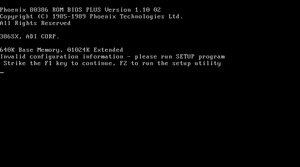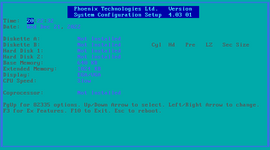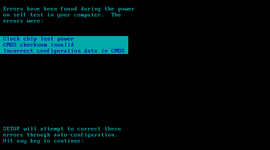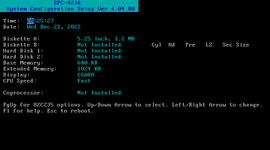mNo edit summary |
No edit summary |
||
| Line 1: | Line 1: | ||
[[File:Phoenix ROM BIOS PLUS POST.png|thumb|The POST screen]] | [[File:Phoenix ROM BIOS PLUS POST.png|thumb|The POST screen]] | ||
Phoenix ROM BIOS PLUS is a version of [[PhoenixBIOS]] based on the classic PhoenixBIOS codebase and released in 1987 by [[Phoenix Technologies]]. It was the first version of PhoenixBIOS to include a built-in CMOS setup utility, although not all instances of it include one. It also introduced a more detailed memory test (for both base and extended memory) and slight changes with some error messages during the POST. | Phoenix ROM BIOS PLUS is a version of [[PhoenixBIOS]] based on the classic PhoenixBIOS codebase and released in 1987 by [[Phoenix Technologies]]. It was the first version of PhoenixBIOS to include a built-in CMOS setup utility, although not all instances of it include one. It also introduced a more detailed memory test (for both base and extended memory) and slight changes with some error messages during the POST. | ||
It was succeeded by PhoenixBIOS 4.0x (based on the Quadtel BIOS codebase) in 1988 and PhoenixBIOS Ax86 (based on the classic PhoenixBIOS codebase) in circa 1990-1991. | |||
== Built-in CMOS Setup Utility == | == Built-in CMOS Setup Utility == | ||
| Line 15: | Line 17: | ||
</gallery> | </gallery> | ||
== Dell | == Dell version == | ||
Dell | Dell formerly developed their own version of the Phoenix ROM BIOS PLUS by making a fork based on its codebase in 1988. This version was used on many newer Dell computers, with the latest known instance of it being released in February 2020 as a BIOS update for the PowerEdge R620, which was initially released in 2012 and thus making it one of the last computers ever made that uses this BIOS. | ||
Revision as of 12:23, 4 September 2024

Phoenix ROM BIOS PLUS is a version of PhoenixBIOS based on the classic PhoenixBIOS codebase and released in 1987 by Phoenix Technologies. It was the first version of PhoenixBIOS to include a built-in CMOS setup utility, although not all instances of it include one. It also introduced a more detailed memory test (for both base and extended memory) and slight changes with some error messages during the POST.
It was succeeded by PhoenixBIOS 4.0x (based on the Quadtel BIOS codebase) in 1988 and PhoenixBIOS Ax86 (based on the classic PhoenixBIOS codebase) in circa 1990-1991.
Built-in CMOS Setup Utility
Initially, this version could be licensed from Phoenix either with one of the available options (Cyan-Blue and Black-Cyan) for the built-in setup utility or without any. Other than the color scheme and some slight cosmetic changes, both the available utilities are functionally identical.
On later instances, the PhoenixBIOS Ax86 setup utility could also be seen, which is both visually and functionally different from the earlier utilities. However it is unknown if this was an official option that was later available from Phoenix or the result of an unofficial OEM modification performed by porting the Ax86 setup utility to the older ROM BIOS PLUS codebase.
On all setup utilities, when entering the setup utility after an error has occurred during POST, a brief error log is displayed containing a list of all the errors that have occurred. This screen can be skipped by pressing any key on the keyboard.
-
Error log screen for setup variant 1
-
Setup screen (variant 1)
-
Error log screen for setup variant 2
-
Setup screen (variant 2, top text modified by Samsung although the utility is from Phoenix)
Dell version
Dell formerly developed their own version of the Phoenix ROM BIOS PLUS by making a fork based on its codebase in 1988. This version was used on many newer Dell computers, with the latest known instance of it being released in February 2020 as a BIOS update for the PowerEdge R620, which was initially released in 2012 and thus making it one of the last computers ever made that uses this BIOS.



